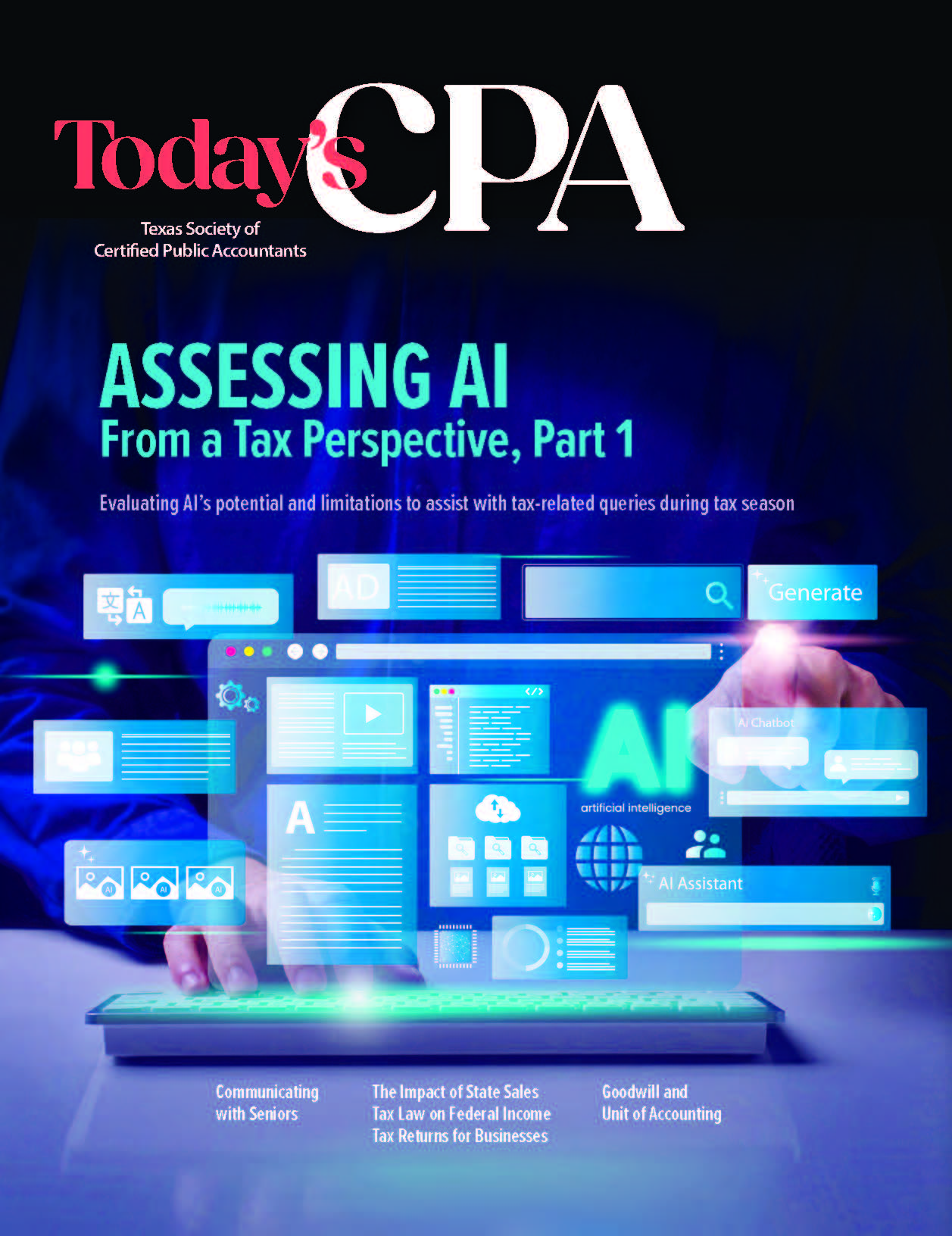January 15, 2025
Driving Strategic Growth: ASC 280 Segment Reporting Disclosure Fuels Investor Insight
By Shilpa Boggram Sathyamurthy, CPA, CA
As organizations seek to diversify into new business streams and markets, they unlock not only fresh revenue opportunities but also enhance their ability to withstand market fluctuations and changing consumer preferences. This strategy of diversification is essential for driving long-term growth, as it allows companies to position themselves to seize emerging opportunities while managing the risks associated with an increasingly complex global marketplace.
However, in a landscape of rapid change and expansion, stakeholders – including investors, analysts and capital allocators – require more than just a broad narrative about diversification. They need precise, transparent and detailed financial information to assess how these strategies are being executed and whether they are contributing to sustainable growth.
This is where segment disclosures, as outlined in ASC 280, become indispensable. Segment reporting offers insights into a company's various business units, providing transparency into how each segment contributes to overall financial performance and long-term prospects.
Under ASC 280, public companies are required to report financial results for distinct operating segments, which enables investors to better understand where value is being created, how resources are allocated and what risks might be associated with individual lines of business. Updates to ASC 280, as detailed in the November 2023 Accounting Standards Update (ASU), further emphasize the importance of segment expense disclosures, aligning reporting practices with the growing demand for more granular data. These changes aim to enhance the clarity of segment performance by requiring companies to disclose significant expenses, along with other segment-related metrics, both annually and on an interim basis.
This article explores the updated ASC 280 segment disclosure requirements in detail, offering an overview of the ASU and discussing the practical considerations organizations face in implementing these changes.
Brief Overview of ASC 280 Segment Reporting Guidance
According to ASC 280-10-10-1, the objective of segment reporting for public entities is to provide information about different business activities and the economic environments in which they operate. This helps users of financial statements to:
- Better understand the public entity's performance;
- Assess its prospects for future net cash flows; and
- Make informed judgments about the entity as a whole.
Under ASC 280-10-50-12, public entities must report separately on operating segments that meet certain quantitative thresholds, including:
- Revenues accounting for 10% or more of combined revenue;
- Profits or losses representing 10% or more of the larger amount of combined profits or losses from all operating segments; and
- Assets making up 10% or more of combined assets.
Segments not meeting these thresholds may still be reported separately if management believes that this information is useful. This flexibility granted by ASC 280-10-50-12 allows entities to disclose segment information even if quantitative thresholds are not met. This is crucial for companies aiming to demonstrate their long-term growth strategies and diversification efforts to investors. By effectively communicating their focus on sustainable growth through expansion and diversification, companies can better position themselves for future success.
Accounting Standard Update to ASC 280
In November 2023, the Financial Accounting Standards Board (FASB) issued an update to ASC 280 aimed at improving disclosures regarding a public entity’s reportable segments. This ASU was issued in response to growing demand for more granular insight into how companies allocate resources and assess the performance of their various business segments. This update responds to requests from investors and capital allocators for more detailed information about segment expenses. The primary objective is to enhance reportable segment disclosure requirements, particularly concerning significant segment expenses.
The ASU amendments enhance reportable segment disclosure requirements, focusing on significant segment expenses. Key changes include:
1. Disclosure of Significant Expenses: Public entities must disclose significant segment expenses provided to the chief operating decision maker (CODM) on both an annual and interim basis, as part of each reported segment profit or loss measure.
2. Other Segment Items: Entities must report an amount for "other segment items" by segment, detailing its composition. This category represents the difference between segment revenue and significant expenses, aligning with reported profit or loss.
3. Annual and Interim Disclosures: All annual disclosures about a segment’s profit or loss and assets, as required by ASC 280, must also be provided during interim periods.
4. Multiple Profit Measures: If the CODM uses multiple measures of segment profit or loss, entities may report these additional measures. However, at least one measure must align with the principles used in the consolidated financial statements.
5. CODM Information: Entities are required to disclose the title and position of the CODM, along with an explanation of how they utilize the reported profit or loss measures to assess performance and allocate resources.
6. Single Reportable Segment: Entities with a single reportable segment must provide all disclosures required by these amendments, as well as existing disclosures in ASC 280.
The ASU applies to all public entities that are required to report segment information in accordance with Topic 280. All public entities are required to report segment information in accordance with the new guidance starting in annual periods beginning after December 15, 2023.
Key Considerations in Implementing Segment Reporting Disclosures
Determining Operating Segments Relevant for Organization's Disclosure. Entities must identify the operating segments of the entity for the disclosure early on to ensure setting up of the processes are aligned. Best practice would be to document and obtain sign offs from various stakeholders to ensure all the relevant teams and parties involved are aligned.
Per 280-10-50-1, an operating segment is a component of a public entity that has all of the following characteristics:
- It engages in business activities from which it may recognize revenues and incur expenses (including revenues and expenses relating to transactions with other components of the same public entity);
- Its operating results are regularly reviewed by the public entity's CODM to make decisions about resources to be allocated to the segment and assess its performance; and
- Its discrete financial information is available.
Data Readiness. Most entities have evolved or expanded into diverse business streams to capitalize on opportunities in an ever-changing market landscape and the expansion often may not have been part of their initial strategic planning. Consequently, their existing systems and data frameworks may not be equipped to support the level of detail required for segment disclosures under ASC 280. The systems and the data framework may not have been built to cater to this dynamic expansion at the level.
To meet these disclosure requirements, entities must invest resources into developing data readiness required to be able to determine the financial metrics. This investment is even more critical now with the ASU to ASC 280, which mandates the disclosure of significant expenses and other segment items.
While many organizations may already possess sufficient information to assess strategy, investments and internal metrics, the adequacy of this information for ASC 280 disclosures can vary. Segment reporting requires entities to generate a segment-level profit and loss (P&L) statement, segment assets or at least be able to generate the financial metrics reviewed by CODM.
Allocation Methodology. Certain financial statement items, such as general and administrative costs, support costs, and shared assets and liabilities, may not be directly attributable to individual operating segments. In these cases, it is essential for organizations to carefully review and establish an appropriate allocation methodology.
This process involves evaluating the nature of each financial item and determining how it should be apportioned across the segments based on its impact on each. The allocation methodology should be rational, consistent and reflective of how the costs or resources are used by each segment.
To ensure transparency and accuracy, entities should document the rationale behind their allocation decisions and consider any potential implications for financial reporting and segment performance assessment. As stipulated by ASC 280-10-50-20, public entities must disclose segment information for each period in which an income statement is presented. Therefore, it is critical to ensure the allocation methodology used is consistent across all the periods for which the segment information is presented.
SOX Compliance. To effectively implement the ASC 280 segment reporting disclosures in financial statements, organizations must ensure that the underlying processes comply with Sarbanes-Oxley (SOX) requirements. Depending on the organization's current control environment and process maturity, several key areas may require attention and resource allocation to ensure compliance:
1. Risk Assessment. A thorough risk assessment should be conducted to identify potential gaps in the segment reporting process. This involves reviewing the key controls and processes related to segment reporting and implementing necessary remediation actions. Particular attention should be given to ensuring appropriate segregation of duties and access management controls to mitigate the risk of fraud or errors.
2. Robust Documentation. Comprehensive documentation is essential for effective SOX compliance. Organizations should document the processes associated with segment reporting, including the frequency of each task, the roles and responsibilities of process owners, and the stakeholders involved. Clear documentation ensures that controls can be consistently executed and evaluated.
3. Control Testing. Performing control testing is critical to verify that the implemented SOX controls are operating effectively. Control owners should regularly test and evaluate whether controls are functioning as intended, ensuring that any discrepancies are promptly identified and addressed.
4. Continuous Monitoring and Review. To maintain ongoing compliance, organizations should develop a plan for continuous monitoring of controls. This involves establishing a regular review cadence, where control owners certify the operating effectiveness of controls and make adjustments as necessary. Regular reviews help identify evolving risks and ensure that controls adapt to changes in processes or business conditions.
Building Transparency and Investor Confidence
Segment reporting disclosures under ASC 280 are a critical tool for investors seeking to understand the financial performance and long-term prospects of an entity. As businesses continue to diversify and expand, the importance of transparent, detailed segment reporting will only grow.

Entities that embrace these disclosure requirements can better communicate their strategic vision and build investor confidence. In turn, this fosters stronger relationships with capital allocators and positions companies for sustainable long-term growth in an increasingly complex market environment.
About the Author: Shilpa Boggram Sathyamurthy, CPA, CA, is a Senior Manager, Accounting, at DoorDash. Contact her at shilpa.boggram@gmail.com.
Thanks to the Sponsors of Today's CPA Magazine
This content was made possible by the sponsors of this issue of Today's CPA Magazine:
















